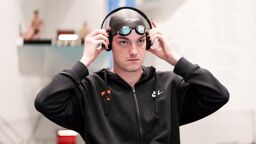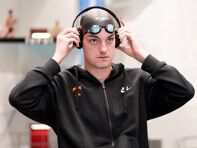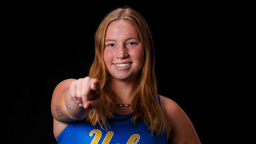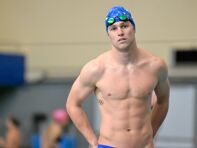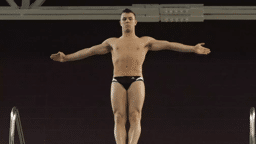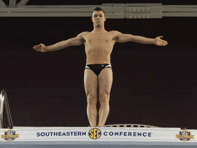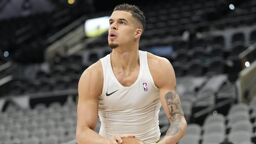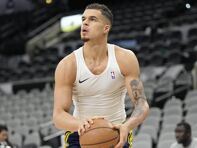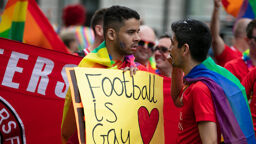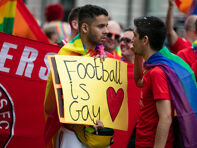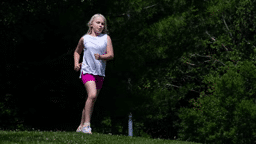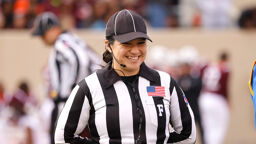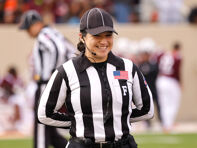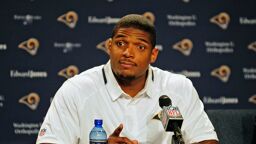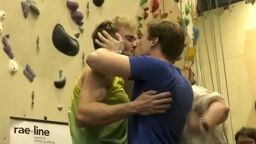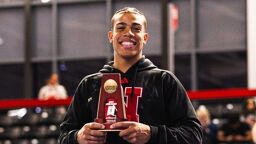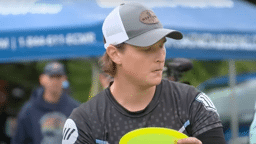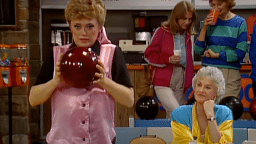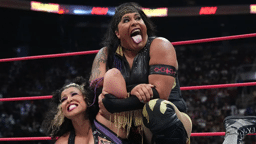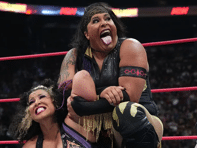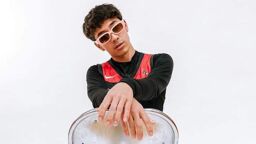In May 2019, I started another chapter in my life with a new career at an engineering company. As a team-building activity we played golf during the summer.
I hadn’t played golf in six years but thought it would be great way to meet my new project team. As I stood on the tee box, my thought was to just make contact and don’t miss the ball.
I had no need to worry because I bombed my tee shot straight done the middle of the fairway for 280 yards. With that one shot I was hooked on playing golf again.
During the round my co-worker jokingly stated I should compete in the World Long Drive. My path to competing had a hitch: I’m a transgender woman.
But after all I’ve gone through both medically and emotionally, I am determined to make my mark as a long drive golfer.
In 2010 I started my transition from male to female at 34. Deciding to transition was not an easy decision. I was prepared to lose my family, my friends, my career, but what I knew was I was not going to lose my life.
The attempted suicide rate for individuals with Gender Identity Disorder is 41% and I did not want to be a part of that statistic.
I started living full-time as a woman on April Fool’s Day 2011 and underwent facial feminization surgery in Boston with Dr Jeffrey Spiegel, hundreds of hours of electrolysis for hair removal, voice therapy and breast augmentation. I had my final surgery a year later. The sexual reassignment surgery in Montreal with Dr. Pierre Brassard at Centre Métropolitain de Chirurgie took six painful months to recover from.

There is a misconception that insurance or taxpayers foot the bill for transitioning, but that is not true. To cover the cost of my transition, I worked three jobs to pay for procedures that cost more than $100,000.
Once I recovered from my surgeries, I realized I was missing out on the LGBTQ community. One spring day in Madison, Wisconsin, I ventured out to a LGBTQ softball clinic with the Badgerland Softball.
Finding a community that was so welcoming and encouraging was amazing.
Finding a community that was so welcoming and encouraging was amazing. Soon I was playing in multiple leagues, traveling to tournaments and playing in World Series in both open and women’s divisions.
It was heartwarming to hear high praise from members of the LGBTQ softball community. Two stand out. One was Jeff Sloan, athletic director of NAGAA, the governing body for LGBTQ softball.
“Jamie was the first trans athlete I met several years ago when traveling to LGBTQ softball tournaments,” Sloan said. “I know that her visibility at those tournaments early on educated people and improved relations for our trans members in NAGAAA for years to come. Jamie later became a teammate of mine and an inspiration to us all in the LGBTQ softball community.”
The other was Jeffrey Bligh-Jones of the Migrating Ducks team:
“It takes courage and strength to be a beacon of light and hope in this world,” Bligh-Jones said.
“Jamie is exactly that for the transgender community both inside and outside of the sports world. As a coach, I always find ways to learn from any player that I coach. Jamie taught me to never fear our differences; but to embrace and celebrate who we are in this world. Because of Jamie and many others in the transgender community, the hope for a better world on and off the field is extremely bright. I am proud to call Jamie a great friend forever.”

In 2014 after competing in the Gay Softball World Series in Dallas, I relocated to Austin, Texas. The first day in Austin I attended a softball clinic for new players in the LGBTQ league. During this clinic I gave some throwing tips to another player, and one year later she would become my wife.
While softball was welcoming, rediscovering golf has given me a new passion as I strive to compete in the World Long Drive Association. World Long Drive and Golf Channel have a policy for transgender athletes: “A competitor who has had gender reassignment must have had a gonadectomy no less than two years prior to the registration deadline for the specific WLDA event.”
WLDA and Golf Channel has been very welcoming, wanting to be inclusive for transgender athletes to compete in their events. In speaking with the Golf Channel’s medical panel and receiving approval to compete in 2020, they also are reviewing their policy once the International Olympic Committee adopts their new guidelines.
In late fall, I attended workshops with Bobby Peterson at the One Stop Power Shop organized by the Amateur Long Drive Association. The coaching and advice on how to train and prepare for tournaments at the workshop were valuable to development my professional career and participate in WLDA events.
There are many talented athletes who compete in WLDA events, and I have been welcomed by many of my fellow competitors and looking forward to the competing with them in 2020.
Beyond World Long Drive, like every golfer I inspire to be able to compete at a professional level. Outside of golf, there would be an opportunity to work with sponsors, organizations and businesses with diversity and inclusion training.
My grandfather used to quote the old golf adage, “drive for show, putt for dough.” Mine is the opposite in regarding to competing in World Long Drive but also applies to my journey.
Hit ‘em long, hit ‘em forward.
Jamie O’Neill, 43, is a long drive golfer with a goal is to be a role model for other transgender athletes to compete at a professional level and collaborate with sports organizations for LGBTQ inclusion. She can be reached at via email at [email protected] and Instagram (@jamieoneillgolf)
Story editor: Jim Buzinski
If you are an out LGBTQ person in sports and want to tell your story, email Jim ([email protected]).



